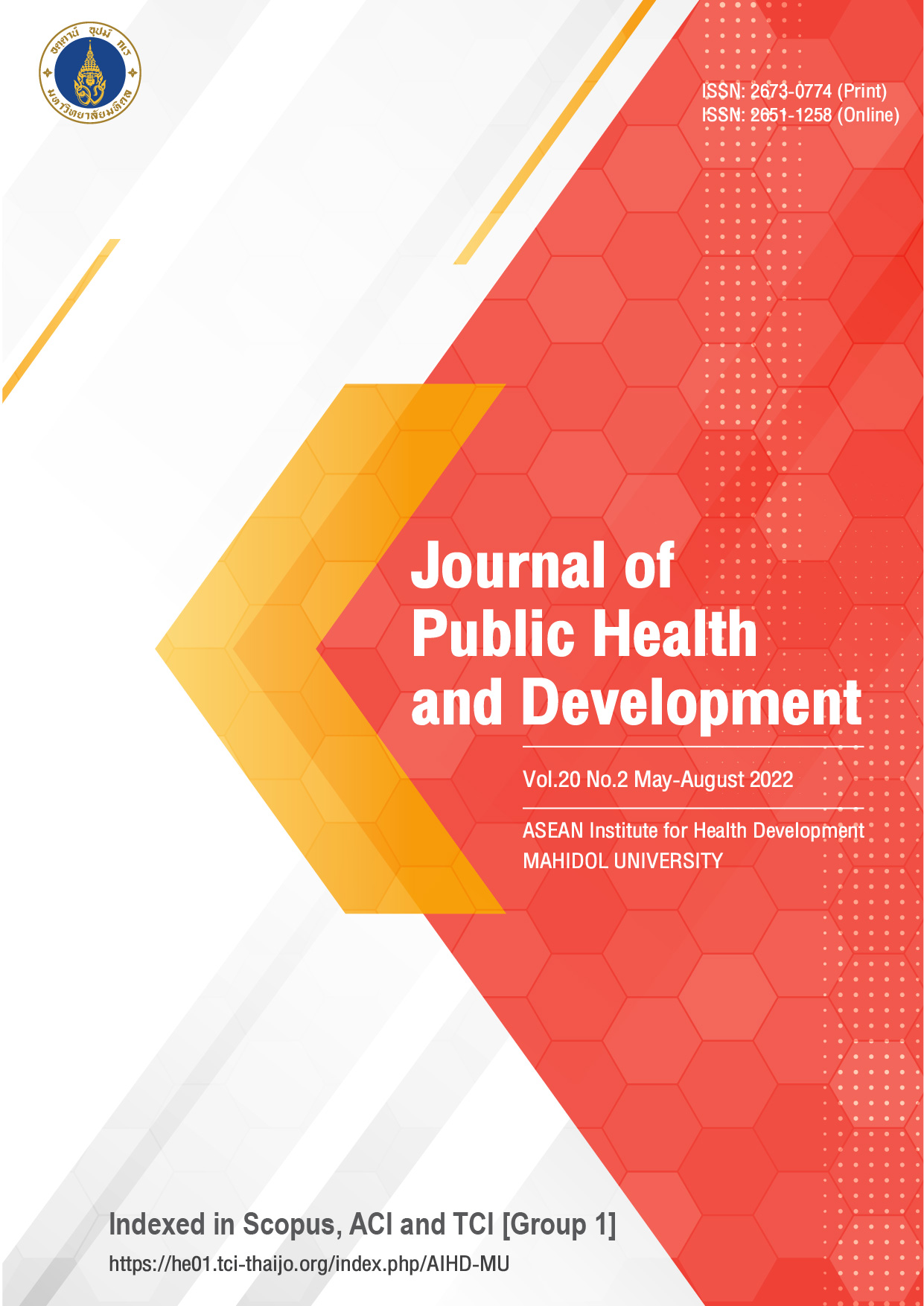Factors Affecting Oral Health Service Utilization of Differently-abled School Children in Kathmandu, Nepal 10.55131/jphd/2022/200208
Main Article Content
Abstract
Lack of oral health care utilization is a common problem among differently- abled children. As a result, oral diseases are often identified in this cohort. This study applied the Anderson health care utilization model to examine the factors associated with the oral health service utilization (OHSU) among the differently-abled school children in Kathmandu city of Nepal. A cross-sectional study was conducted among 400 school children aged 7-18 years old enrolled in 7 schools for differently-abled children in Kathmandu. The OHSU data and the data on the predisposing factors, the enabling factors, and the need factors were self-reported by the parents/legal guardians of the children, using a self-administered questionnaire. An oral examination was performed to assess each child’s dental status. Logistic regression was used to assess the association of OHSU with the predisposing factors, the enabling factors, and the need factors. The results showed that the enabling factors (i.e., “affordability”, and “good oral health knowledge of parents”, and the need factors (“having toothache”) were positively associated with OHSU. In contrast, there was negative association between OHSU and the dental status of the children. Overall, the study showed a very low prevalence of oral health service utilization. The findings indicated that family economic status and oral health literacy of parents and their children play a crucial role in the increased usage of oral health services among differently-abled children. This suggests that, a free oral health service and health literacy programs for the parents and their disabled children in Kathmandu may increase OHSU.
Article Details

This work is licensed under a Creative Commons Attribution-NonCommercial-NoDerivatives 4.0 International License.
References
Youssefi MA, Afroughi S. Prevalence and Associated Factors of Dental Caries in Primary Schoolchildren: An Iranian Setting. International journal of dentistry. 2020;2020:8731486.
Frencken JE, Sharma P, Stenhouse L, Green D, Laverty D, Dietrich T. Global epidemiology of dental caries and severe periodontitis - a comprehensive review. Journal of clinical periodontology. 2017;44 Suppl 18:S94-s105.
Petersen PE. Improvement of global oral health--the leadership role of the World Health Organization. Community dental health. 2010;27(4):194-8.
Crall JJ. Access to oral health care: Professional and societal considerations. Journal of dental education. 2006;70(11):1133-8.
Hosseinpoor AR, Itani L, Petersen PE. Socio-economic inequality in oral healthcare coverage: results from the World Health Survey. Journal of dental research. 2012;91(3):275-81.
Gellman MD, Turner JR. Encyclopedia of behavioral medicine: Springer New York, NY, USA. 2013.
Prasai Dixit L, Shakya A, Shrestha M, Shrestha A. Dental caries prevalence, oral health knowledge and practice among indigenous Chepang school children of Nepal. BMC oral health. 2013;13:20.
Holmes R, Samuels F, Ghimire A, Thewissen S. Nepal's cash allowances for children with disabilities. ODI Report; 2018.
Adhikari SRJO, Canada: Global Network for Health Equity. Universal Health Coverage Assessment Nepal. 2015.
Talib YA, Ghani NIA, Ismail K, Salleh NA, editors. The Provision of the Disabled Facilities in Public Hospitals. MATEC Web of Conferences; 2016: EDP Sciences.
Thapaliya MP. A report on disability in Nepal. Australian Himalayan Foundation (AHF); 2016.
Ojha G. Disability Atlas Nepal: Kathmandu University, School of Arts; 2016.
Andersen RM. Revisiting the behavioral model and access to medical care: does it matter? Journal of health and social behavior. 1995;36(1):1-10.
Xu M, Yuan C, Sun X, Cheng M, Xie Y, Si Y. Oral health service utilization patterns among preschool children in Beijing, China. BMC oral health. 2018;18(1):31.
World Health Organization. Oral health surveys: basic methods: World Health Organization. 2013.
Silness J, Loe H. Periodontal Disease In Pregnancy. Ii. Correlation Between Oral Hygiene And Periodontal Condtion. Acta odontologica Scandinavica. 1964;22:121-35.
Onyejaka NK, Folayan MO, Folaranmi N. Barriers and facilitators of dental service utilization by children aged 8 to 11 years in Enugu State, Nigeria. BMC health services research. 2016;16:93.
Duddu MK, Muppa R, Nallanchakrava S, Bhupatiraju PJJoDNUoHS. Prevalence of dental caries in people attending special schools in Hyderabad-Secunderabad, India. Journal of Dr NTR University of Health Sciences. 2016;5(2):137.
Da Rosa SV, Moysés SJ, Theis LC, Soares RC, Moysés ST, Werneck RI, et al. Barriers in Access to Dental Services Hindering the Treatment of People with Disabilities: A Systematic Review. International journal of dentistry. 2020;2020:9074618.
Gao X, Ding M, Xu M, Wu H, Zhang C, Wang X, et al. Utilization of dental services and associated factors among preschool children in China. BMC oral health. 2020;20(1):9.
Sabbarwal B, Puranik MP, Uma S. Oral health status and barriers to utilization of services among down syndrome children in Bengaluru City: A cross-sectional, comparative study. Journal of Indian Association of Public Health Dentistry. 2018;16(1):4.
Curi DSC, Figueiredo ACL, Jamelli SR. Factors associated with the utilization of dental health services by the pediatric population: an integrative review. Ciencia & saude coletiva. 2018;23(5):1561-76.
Mishra A, Pandey RK, Chopra H, Arora V. Oral health awareness in school-going children and its significance to parent's education level. Journal of the Indian Society of Pedodontics and Preventive Dentistry. 2018;36(2):120-4.
Camargo MB, Barros AJ, Frazão P, Matijasevich A, Santos IS, Peres MA, et al. Predictors of dental visits for routine check-ups and for the resolution of problems among preschool children. Revista de saude publica. 2012;46(1):87-97.
Wehby GL, Shane DM, Joshi A, Momany E, Chi DL, Kuthy RA, et al. The Effects of Distance to Dentists and Dentist Supply on Children's Use of Dental Care. Health services research. 2017;52(5):1817-34.






